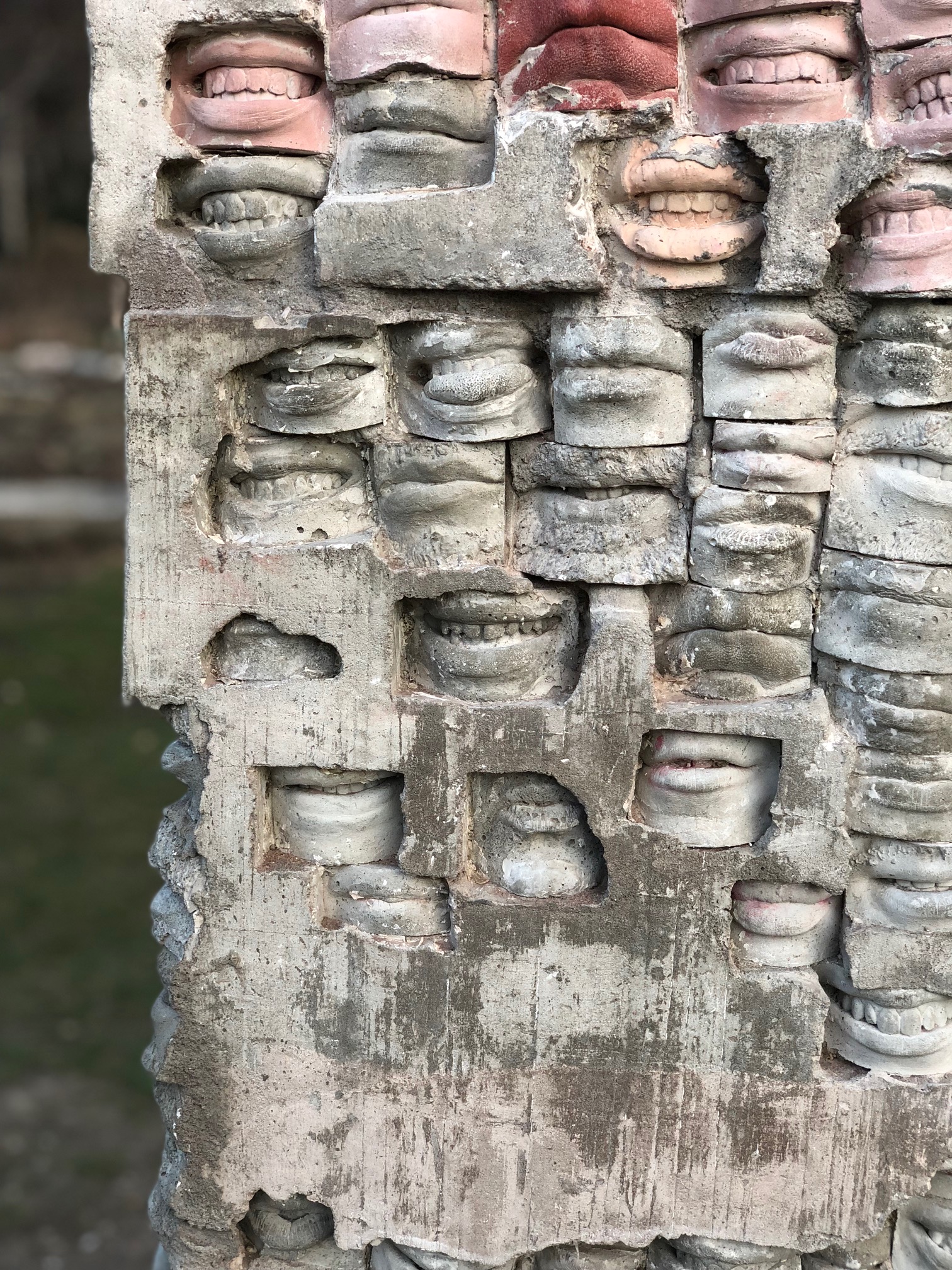
These are independent reviews of the products mentioned, but TIME receives a commission when purchases are made through affiliate links at no additional cost to the purchaser.
The good: Gorgeous design, Colorful screen, Long battery life, Excellent camera with helpful smart features like real-time translation
The bad: AR Emoji feels gimmicky, Camera isn’t always as good as that of the iPhone X
Who should buy: Android fans looking for a fantastic screen, long battery life, and a pretty good camera
Here’s a challenge: Pick out the Samsung Galaxy S9+ from a lineup that also includes the Galaxy S8+ and Galaxy Note 8. I’ll bet you can’t.
Samsung’s latest pair of flagship phones, the Galaxy S9 and Galaxy S9+, bring modest improvements dressed in the same outfit as last year’s Galaxy S8. The two devices start shipping on March 16 for $719.99 (Galaxy S9) and $839.99 (Galaxy S9+). If you’ve used Samsung’s other recent smartphones, there’s a lot that will feel familiar about the Galaxy S9 and S9+.
Both devices have the same eye-popping Super AMOLED screen that covers nearly the entire face of the phone, which Samsung first debuted on the Galaxy S8, S8+ and Note 8. The S9’s display resolution is also the same as last year’s model, and both new phones have retained the standard headphone jack for connecting wired headphones — a rare find on today’s smartphones.
As usual, the biggest changes between the two new flagships comes down to screen size, with the Galaxy S9+ including a 6.2-inch display and the S9 featuring a 5.8-inch screen. The bigger version, which I’ve been using for this review, also as a dual camera, whereas the S9 only has one. (The Plus model also has a larger battery and slightly more memory).
So what exactly is different about the Samsung Galaxy S9 compared to the Galaxy S8? The camera, for starters. Samsung added a dual mechanical aperture that switches between f/1.5 and f/2.4 depending on the lighting, whereas the Galaxy S8’s camera has an f/1.7 aperture.
The Galaxy S9 is certainly capable of taking crisp, colorful photos, but unfortunately for Samsung so are rival smartphones. When comparing the Galaxy S9+’s camera to that of the Apple iPhone X and Google Pixel 2 XL, I found that the iPhone X’s camera was generally best when it came to detail and color accuracy. Colors sometimes looked too bright or washed out in the S9’s photos, as shown in the photo of a flower bouquet below. But I did prefer the S9’s photo over the Pixel 2 XL’s. Google’s phone seemed to have a bluish tint that’s noticeable when looking at the white flowers.
Samsung Galaxy S9

Apple iPhone X

Google Pixel 2 XL

Samsung lived up to its claim of offering impressive low-light performance on the Galaxy S9. It was able to capture a better shot in a completely dark room compared to both the iPhone X and Pixel 2 XL, although all three phones were able to produce a decent image with little noise. The photos aren’t exactly the same since I couldn’t get my kitten to sit still for that long, but you’ll notice that the stripes in his fur are more visible in the S9’s photo, whereas his coat blends into the couch in the other images.
Samsung Galaxy S9

Apple iPhone X

Google Pixel 2 XL

The Galaxy S9+s Live Focus mode, which sharpens the subject in the foreground against a blurred background, performed much better than the Pixel 2 XL’s Portrait Mode, but wasn’t quite as detailed as the iPhone X’s photo. You’ll notice that Samsung’s camera softens some of the details in the stone sculpture that are more clearly visible in the iPhone X’s image.
Samsung Galaxy S9

Apple iPhone X

Google Pixel 2 XL

Where the Galaxy S9+’s camera succeeds over its rivals without question, however, is in its Super Slow-mo feature. Samsung’s new phone can shoot slow-mo footage at 960 frames per second, compared to the iPhone X’s 240 frames/second maximum. Take a look at the GIFs below to see the difference. (Note: The GIFs below may not reflect actual video quality. They are solely meant to show the differences in speed).
Samsung Galaxy S9

Apple iPhone X

Google Pixel 2 XL

The Galaxy S9+’s Super Slow-mo mode also has an auto shooting option that starts recording whenever it senses movement within a certain area. This worked decently in my experience, but I preferred shooting manually since it struggled with detecting certain types of movement, like running water or falling snow. The best part about Super Slow-mo mode is the bite-sized GIFs created from your footage, which are much easier to share than a full video file. The camera also applies certain effects to the clip, such as looping it or playing it in reverse:

It’s not just the main camera that’s learned some new tricks. The Galaxy S9 uses its front-facing camera and facial scanning sensors to make 3-D animated emojis meant to look like real people, in a feature Samsung calls AR Emoji. Once you’ve created an AR Emoji, you can record a message that mimics your facial expressions and share it, or choose from a selection of pre-made animated stickers based on your creation. It’s like a strange mashup of Apple’s Animoji feature on the iPhone X and Bitmoji, except the result doesn’t look anything like you. (At least that was my experience with it. Nothing about the shape or features of my AR Emoji’s face even remotely resembled mine.) That being said, the facial tracking worked pretty well — whenever I blinked, squinted, or opened my mouth, my on-screen avatar did likewise. But that didn’t make up for the fact that my AR Emoji looked too awkward to actually send to anyone:

The Galaxy S9’s camera and front-facing sensors are far more helpful for other tasks, like security authentication. Samsung has long offered the ability to unlock your phone by looking at it, starting with the Galaxy Note 7 back in 2016. But for its newest flagships, Samsung is combining its facial recognition and iris scanning features into one verification method called Intelligent Scan (users can opt to use just one of these biometric methods if they want). Samsung’s Intelligent Scan works decently, but I still found myself occasionally reaching for the fingerprint sensor. Thankfully, the fingerprint scanner is now located in a much easier-to-reach spot below the camera, rather than alongside it.
What’s more exciting, though, is the way Samsung’s camera is becoming smarter about processing the information it sees. Bixby, Samsung’s virtual helper, has learned a few new camera-related tricks. My favorite by far was the real-time translation feature. Just fire up the camera app, press the Bixby Vision button, make sure the camera is set on the T symbol for translation, and point your phone at foreign language text. When the text is translated, Bixby will overlay it on top of whatever you’re looking at. If you’re trying to translate text on a road sign, for example, it almost looks like the words on the sign have magically changed when looking through your smartphone’s viewfinder. This is Bixby’s coolest feature by far, and it generally worked well. It’s best used for translating objects like signs and posters, as I noticed it sometimes jumbled text when translating denser mediums like books and magazines.
You can also point the camera at food to get calorie information, which can be faster than Googling nutritional details — at least when it works properly. Bixby’s makeup feature, which makes it possible to virtually try on lipstick, blush, and eyeshadow by looking through the selfie camera, can also be helpful for deciding which colors might fit your face. The eyeshadow looked surprisingly real, and certain colors of the lipsticks also looked genuine, while others appeared artificial.
The Galaxy S9 shines in other areas too, particularly when it comes to battery life, audio, and display quality. Both phones now have stereo speakers, a boost from last year’s model. The Galaxy S9 sounded more boisterous and clearer than the iPhone X and Google Pixel 2 XL during my testing, but you’ll still get better sound from a dedicated speaker. Samsung’s 2960 x 1440 resolution display, meanwhile, is just as stunning on the Galaxy S9 as it was on the Galaxy S8. Colors sometimes looked richer and more punchy on the S9+’s screen compared to the iPhone X, but I also noticed that the S9+ had a subtle blue tint to it compared to Apple’s smartphone. That’s likely because the iPhone X uses Apple’s TrueTone technology, which adjusts the screen’s white balance to match the lighting in your environment.
The S9+’s battery life is more than enough to get you through a full day. I generally had somewhere between 55 and 65% of my battery left by the time I went to sleep, but that will likely vary depending on how you use your phone. I used the Galaxy S9+ as my primary personal phone over the course of this review period, which meant I most frequently used it for tasks such as emailing, texting, browsing the web and social media, and taking photos.
The Galaxy S9 may not be the most exciting upgrade to come from Samsung, but it doesn’t necessarily have to be. The Galaxy S8 was already an excellent phone, so it makes sense that Samsung would leave the overall design untouched and focus squarely on the camera. Samsung hits and misses in that regard, with impressive features, like Super Slow-mo and Bixby Vision, along with underwhelming efforts, like AR Emoji. While the Galaxy S9’s camera didn’t always provide the best image quality in all of the situations I tested it in, it was pretty darn close.
Taken together, the Galaxy S9’s updates suggest that the most innovative changes coming to your smartphone will likely appear in the camera from here on out, whether it’s through new augmented reality features or advanced facial scanning. Considering there isn’t much that’s changed compared to last year’s model, the Galaxy S9 and S9+ are both top-notch choices for Android fans in the market for a new smartphone. But if you already have a Galaxy S8, you probably don’t need to bother upgrading just yet.
4 out of 5 stars
More Must-Reads From TIME
- The 100 Most Influential People of 2024
- The Revolution of Yulia Navalnaya
- 6 Compliments That Land Every Time
- What's the Deal With the Bitcoin Halving?
- If You're Dating Right Now , You're Brave: Column
- The AI That Could Heal a Divided Internet
- Fallout Is a Brilliant Model for the Future of Video Game Adaptations
- Want Weekly Recs on What to Watch, Read, and More? Sign Up for Worth Your Time
Contact us at letters@time.com